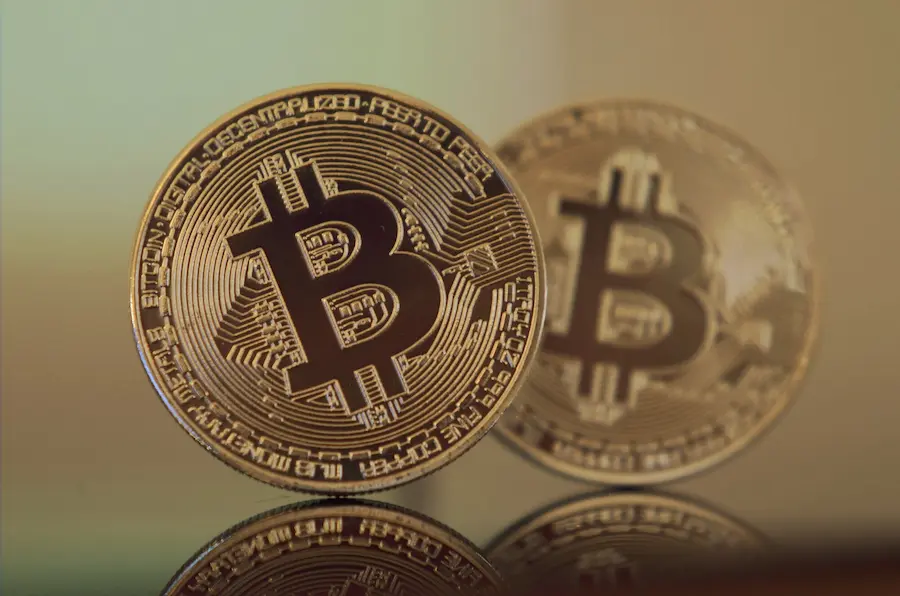Did you know that 16% of Americans have invested in cryptocurrency? If you’ve been paying attention to the news, you know that fortunes are often made and lost by investing in things like Bitcoin.
Part of the reason for this is the large transaction fees that come when you trade cryptocurrency. But exactly what are Bitcoin transaction fees? And how do you go about saving money on them?
If you want to learn the answer to these questions, and more, you’re in the right place.
In this guide, we’ll break down everything you need to know about Bitcoin transaction fees. That way, you can maximize any investment you decide to make into cryptocurrency.
Table of Contents
Why Do Bitcoin Transaction Fees Exist?
Anyone that’s traded Bitcoin knows that the transaction fees can get incredibly expensive quickly. So what’s the point of them? There are three main reasons why these transaction fees exist.
First, it’s to prevent any blockchain network from getting overwhelmed by illegitimate transactions that stop the proper functioning of the network.
Second, it acts as an incentive for the people that run and secure the network for other users. Lastly, transaction fees are needed to distribute a finite resource: block space.
Block space refers to the number of transactions that the network can process at any given time. This block space is important because it creates a needed supply and demand dynamic for Bitcoin.
When the overall demand for block space is low it will lead to low transaction fees. The opposite is true as well. This supply and demand dynamic also explains why the price of Bitcoin rises and falls so much.
The good news is that the price of Bitcoin has currently reached a monthly high despite the high levels of inflation that persist throughout the rest of the economy.
How Do Bitcoin Transaction Fees Work?
Now we know why Bitcoin transaction fees are necessary for the proper function of the crypto network. But how exactly do they work in practice?
There are two actions that require people to be paid transaction fees for Bitcoin. This includes adding certain types of data to the overall blockchain and the computational effort needed to maintain the blockchain.
Cryptocurrencies like Bitcoin tend to derive most of their transaction fees from adding data to the blockchain.
The other action is reserved for cryptocurrencies that use smart contracts, like Ethereum. The more complicated your smart contract is, the more money you can expect to pay in transaction fees.
What Are the Two Types of Crypto Fees?
When you’re first looking into Bitcoin or any cryptocurrency you’re going to encounter two types of fees. The first of the crypto fees is a miner’s fee.
As we mentioned in the last section, the cost of this type of fee is determined by the size of your transaction and the speed with which you want it completed.
The money from this fee will be paid to the miner that’s controlling the transaction. Miners get to pick a choose which crypto transactions to complete.
So, if a transaction has a higher fee attached to it, it’s going to be a priority for the miner. The other type of fee you’re likely to encounter is a service fee. These types of transaction fees are charged by third parties.
The third party could be a cryptocurrency exchange or a Bitcoin ATM. These types of parties will either charge their fee through a flat rate or based on a percentage of the specific transaction.
That being said there are often different tiers to how they charge the rates. Usually, the larger your transaction is the less expensive it will be. They do this to discourage small transactions that they don’t profit much from.
Automatic or Manual?
When calculating your specific Bitcoin transaction fees you’re likely going to be given the choice between automatic or manual. Let’s start with the automatic option which is a usual feature of online crypto wallets.
With this option, you will be given two main choices. The first choice is a prioritized transaction. This type of transaction can usually be completed by the exchange in under one hour.
The other type is a regular transaction which will take well over an hour to complete. As you can guess, the prioritized transactions come with higher fees.
If you want the easiest way to quickly calculate your specific transaction fees, go with the automatic method.
Alternatively, you can choose the manual method, but it will require a lot of time and calculation on your part. As such, we don’t recommend it.
How Much Are Bitcoin Transaction Fees?
It doesn’t matter how you use Bitcoin. Whether you’re buying, selling, or using it to pay for something, you’re going to need to pay some type of transaction fee.
There are two main factors that affect the cost of these transaction fees. The first factor is the data volume of the transaction. The larger your transaction is, the more you can expect to purchase in fees.
The second factor is the speed at which you want the transaction completed. The faster you need it done the more costly it’s going to be. It’s part of the reason why fast options like Bitcoin ATMs cost a lot more than slower cryptocurrency exchanges.
As a result, some Bitcoin transaction fees can be less than $1. Others can be well over $100. It all depends on the nature of the transaction and the current state of the market.
How to Save Money On Bitcoin Transactions
Most people invest in Bitcoin to ultimately make money. Because of this fact, it makes sense to try and save as much money as possible on the transaction required to buy and sell them.
That’s why we made this section. In it, we’ll be going over some advice for lowering the amount of money you need to pay on Bitcoin transaction fees.
1. Time Your Transactions For a Different Time of Day
The more people that try to complete transactions, the more expensive it’s going to be. Because of this, it makes sense to delay completing your transaction until business hours are well over.
It’s true that Bitcoin is traded all over the world. However, the vast majority of transactions occur within the United States. Because of this, transaction fees tend to be highest during the mornings within United States time zones.
If you can, consider completing your Bitcoin transaction during the middle of the night (if you don’t mind waking up then).
Alternatively, you can also try doing them during the weekend. Fewer transactions are made on Saturday and Sunday which can lead to lower transaction fees.
2. Compare the Pros and Cons of Different Service Providers
If you’re tired of large transaction fees, your next best bet is to find a different service provider. First, you should explore the differences between different cryptocurrency exchanges.
Each of these exchanges offers different fee options. As such, it makes sense to organize a list to find out who currently offers the best rates. Just keep in mind that these fees can change all the time so you will need to stay updated.
Also, remember that cryptocurrency exchanges aren’t the only places where you can buy and sell Bitcoin. You should also consider Bitcoin ATMs like the kind found when you click here.
It’s true that these ATMs do tend to come with high transaction fees. But they also come with a lot of benefits as well. First, you can get a much transaction limit which means more bang for your buck.
Second, they’re incredibly fast, especially when compared to cryptocurrency exchanges. As such, they’re definitely worth considering.
3. Take Advantage of the Lightning Network
The Lightning Network was created to combat long processing fees that plagued early Bitcoin transactions. How does it work? By using an off-chain protocol, the Lightning Network is able to speed up payment times considerably.
Basically, the network creates channels for payments that occur off the blockchain. The transaction occurs on these separate ledgers. Then, when they’re complete they merge back into the original blockchain.
Not only can reduce their processing times with the Lightning Network, but they can also lower their transaction fees.
We recommend using this network for small transactions since you won’t need to pay high fees for these types of microtransactions.
4. Consider Cryptocurrency Other Than Bitcoin
It’s true that Bitcoin tends to have lower transaction fees than other types of cryptocurrency. That’s because its mining operation has been around long enough for people to simplify the process considerably.
That being said, there are other types of cryptocurrencies with even lower transaction fees than Bitcoin. Bitcoin Cash is one great option, as is Litecoin.
Just keep in mind that there are plenty of cryptocurrencies that come with higher transaction fees than Bitcoin. For example, Ethereum coins typically come with transaction fees that are double Bitcoin’s.
So you will need to weigh the pros and cons of these alternative cryptocurrencies if you hate dealing with high transaction fees.
5. Use Wallets With Scaling Technologies
Back in 2017, the Bitcoin community adopted an on-chain change known as SegWit transactions. With these types of transactions, people will pay roughly 30% less on their transaction fees.
They do this through the use of scaling technologies. As such, consider looking for wallets or exchanges that offer SegWith transactions.
Not all of the major wallets and exchanges have adopted them. As such, you will likely need to search for a list of approved options.
6. Try Batching
The more transaction you send, the more fees you will need to go through. So consider a practice known as batching.
This is when you consolidate numerous transactions into one batch. It allows you to lower the overall transaction fees you will need to pay.
Will Bitcoin Deal With the Transaction Problem in the Future?
There are different ideas for the solution to the problem of high Bitcoin transaction fees. Basically, the community is divided into two main groups.
The first group feels that the storage capacity of blocks should be raised to eight MB. The idea behind this is that it would allow for more transactions which would lower the overall fees associated with them.
However, the second group believes that more storage capacity would result in disaster. They believe that there aren’t enough users to verify all of these new transactions.
Since consensus is needed amongst Bitcoin community members to raise the limit, it stayed the same. So we can’t expect Bitcoin to deal with the problem anytime soon.
However, government agencies like the Biden administration are interested in trying to regulate this type of currency. The main goal of the administration is to lower the environmental impact of Bitcoin mining.
But it’s also to end the exploitation that large transaction fees can sometimes cause.
Appreciate Learning About Bitcoin Transaction Fees? Keep Exploring
We hope this guide helped you learn more about Bitcoin transaction fees. As you can see, the issue of transaction fees is built into the cryptocurrency formula.
Because of this, they aren’t likely to go away anytime soon. As such, make sure to factor them in whenever you’re considering a Bitcoin investment. That way, you don’t end up losing money on the deal.
Appreciate learning about this cryptocurrency topic? If so, make sure you keep exploring our website to find dozens of similar articles that you’re sure to love.

